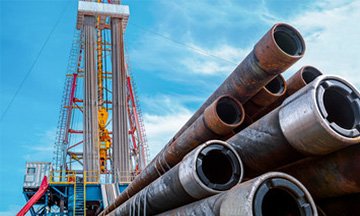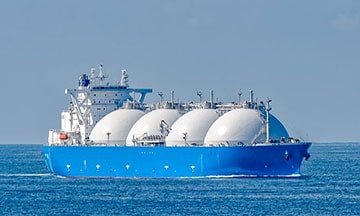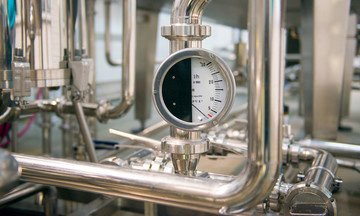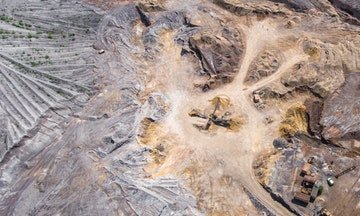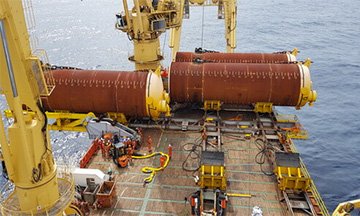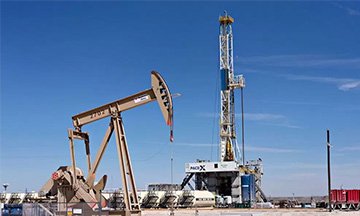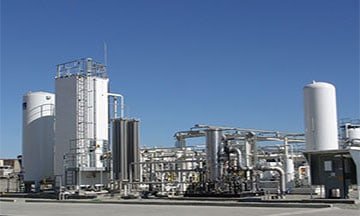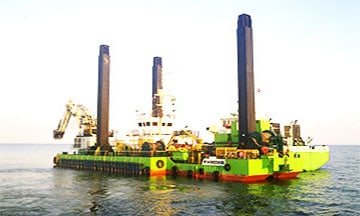Stuck Pipe Prevention, Fishing in Drilling – Tools and Operation
Course Overview
The course provides comprehensive and complete coverage and handling in the industry to understanding and master the main issues that lead to stuck pipes. Stuck pipes is the main source of (NPT) Non-Productive Time that is associated with drilling operations, loss circulation, and wellbore instability. Non-productive time costs companies thousands of dollars, and preventing such incidents could save a lot of funds.
What is the function of a drill pipe?
This course will cover different techniques that aim at reducing or eliminating stuck pipe incidents on your rig, including the function of a drill pipe. The course will also look at the correct responses that an individual or a group can identify, early warning indicators, and minimising the effects of stuck pipe to drilling operations.
The course will be highly practical. By indulging in practical lessons and discussions, referencing the best available materials, students will use latest technology used in drilling to avoid NPT.
How do you keep a pipe from drilling stuck?
Stuck pipes can cost an organisation thousands of dollars in costs if not handled or eliminated with high efficiency. This course from Zoe will produce professionals who can handle stuck pipes with high degree of efficiency and reduce the operational costs that a company might face.
Some of the main skills that will be delivered include how to analyse and predict and make a contingency plan to avoid or in case there is stuck pipe and how to write a well written and explained report after stuck pipe incident.
Course Objectives
The goal of this course is to enable participants to be able to:
- Make decisions that are well evaluated and cost-effective choices when planning fishing operations
- Thoroughly understand and master the art of implementing effective drilling and best globally acceptable tripping practices
- Review existing fishing plans and operations
- Analyse and examine trends to locate fast enough, issues in wellbore
- Oversee multiple functions of stuck pipe correction
- Assess and evaluate mechanics of wellbore hole issues and the main effects of wellbore core stability
- Examine the main cause and the mechanisms that lead to stuck pipe issue and the involved future risks
- Evaluate some of the common issues of stuck pipe such as hole cleaning, wellbore geometry, differential sticking, and wellbore instability
Training Methodology
The course will indulge various proven methods of content delivery and teaching to enable the participants to gain most from the facilitators. The methods focuses on maximum understanding and increased comprehension of the delivered information. Training will be conducted by highly experienced and reputable professionals in their field of domain. It will be a blended type of training where some of the lessons will be practical while others will be theoretical.
Like all Zoe courses, this tool and operation based courses follows the ‘Learn-Apply-Review’ model of discovery and lasting learning.
Organisational Benefits
Organisations that will send their professionals to undertake this course stand to benefit in the following ways:
- Thorough review and analysis of the existing documentation and procedures of identifying stuck pipe
- Well managed organisational implicated costs from stuck pipe operations
- Overcome the NPT particularly and effectively well controlling with better prediction of problems that might arise and causes of problems before it happens
- Detailed risks analysis to ensure well integrity, evading issues, and solving the existing problems in a logic and simplified manner
- Regularly training of other employees who did not partake in this course by those who undertook the course
- Extending tremendously the well life including all the other items and machinery that are in operation
Personal Benefits
Professionals who will be undertaking this course stand to benefit in the following ways:
- Complete understanding of integrating knowledge of hole issues
- A sense of pride when contributing to the overall development of the organisation
- Better understanding and well exposed to latest technology utilised in stuck pipes
- Great potential to manage the general operational costs of the organisation
- Enhanced foresight to identify problems, plan, and solved them with low-cost implication to the organisation
- Cost reduction for the organisation
- Having control of any problem that might arise
Who Should Attend?
- Drilling superintendents who need to understand the main concepts of stuck pipe prevention and fishing in drilling
- Tool pushers that will interacting with stuck pipes
- Senior drillers who will be undertaking drilling to prevent stuck pipe in the future
- Drilling engineers playing key roles in stuck pipe prevention through design and actualisation
- Mud engineers who seek to understand the problems associated with stuck pipes
- Drilling supervisors interesting in knowing more about stuck pipe prevention
- Any other professional whose interest is in stuck pipe prevention, fishing in drilling, tools, and their operation
Course Outline
Module 1: Causes of stuck pipes
- Human activates and factors that may lead to stuck pipes
- Deferring from set out procedures
- Tour change issues (most stuck pipe situations happen here)
- Lack of team coordination
- Lack of proper and efficient communication
- Lack of adequate planning
- Failure to read and interpret warning signs
- Use of tour change form to record conditions and identify the current trends
Module 2: Wellbore Stability
- Clay chemistry
- Chemical interaction in wellbore
- Well site analysis
- Physical interactions
- The Earth’s stresses
- Shale deposition and sedimentary rocks
- Well site analysis
- Mechanical stress failure
- Mechanical conditions
Module 3: Rock Mechanics
- Drilling fluid effect on the bore hole stability
- Mechanics and causes of faulting and fractures
- Induced factors affecting bore hole stability
- Shale stabilisation
- Geo mechanics and structural geology
- Causes of folding and their mechanics
- Bore hole stability
Module 4 : Introduction to Stuck Pipe
- Causes of stuck pipe
- Problems formation
- Definition of stuck pipe
- Reading and interpreting warning signs
- Responding to warning signs
- Mechanical causes of stuck pipes
- Cause of downtime
- Human error – mainly lack of adequate communication
- Why stuck pipes are preventable
Module 5: Sticking Types
- Casing problems
- Key seating
- Wellbore geometry
- Inadequate hole cleaning
- Cement problems
- Junk in the holes
- Reactive formations
- Cause for most stuck pipe situations
- Geopressured formation
- Mobile formations
- Mechanical sticking
- Unconsolidated formation
- Differential sticking
- Drilling overbalance (most common cause)
- Formational sticking
- Fractured formations
- Faulted formations
Module 6: Differential Sticking
- Rotate
- Seal the wellbore
- Mud formation
- Avoiding differential sticking
- Circulate
- Drill string flexing definition
- Moving the drill string up and down
- Definition of differential sticking
- Controlling the well pressure
- Efficient communications
- Filter cake definition
- Removing cuttings
- Circulating enough fluids in the hole
- Most common occurrence of differential sticking
Module 7: Fishing Operations
- Overshoot
- Reserve twists
- Small explosive charge
- Washing over
- Side tracked hole
- Plugging the hole
- Adding Jars to Fishing String
- Fracture joining
- Drill collars
- Drill pipes
- Twist off cases
- Free point indicator
Module 8: Broken Bit Cases
- Using different bits
- Using hollow basket
- Using magnet for fishing
- Break way of one of the conical cutters and leg down the hole with bearing
- Using explosive charge for too large pieces of metals
Module 9: Warning Signs
- String weight changes
- Pump pressure changes
- Changes at the shakers
- Name the mechanism – simulations
- Gather clues
- Torque changes
- Geometry mechanism
- Differential mechanism
- The hole is talking
- Circulation rate changes
- Mud properties
- Three mechanisms
- Bridge mechanism
- Hole pack off mechanism
Module 10: Prevention Plan
- Differential
- Wellbore geometry
- Hole pack
- Bridging
- Review of three stick mechanism
- Developing stuck pipe prevention plan
- Hydraulics
- Shaker hand should communicate
- Mud logger examining cuttings to communicate with driller
- The mud must be ready and conditioned properly
- Team work and communication
- Chemical mixing agents
- Case study
